The Merry Band of Stadtmans
Meet 15 New Stadtman Investigators
Meet 15 more investigators who have become part of the Earl Stadtman Tenure-Track Investigator Program. The program, which was launched in 2009 and named for the legendary biochemist who worked at NIH for 50 years, aims to recruit a diverse group of scientists pursuing interests across the biomedical-research spectrum.
Seven of the Stadtmans focus on cancer research and work in the National Cancer Institute’s Center for Cancer Research: Pedro Batista, John Brognard, Chengkai Dai, Ramiro Iglesias-Bartolome, Jagan Muppidi, Chuan Wu, and Ping Zhang. Two of the new investigators work for the National Heart, Lung, and Blood Institute: Brian Glancy (who has a dual appointment with the National Institute of Arthritis and Musculoskeletal and Skin Diseases) and Tiffany Powell-Wiley (who has a joint appointment with the National Institute on Minority Health and Health Disparities, NIMHD). Chandra Jackson hails from the National Institute of Environmental Health Sciences in Research Triangle Park in North Carolina. She also holds a dual appointment with NIMHD. The other five Stadtmans each represent a different institute: Katherine McJunkin (National Institute of Diabetes and Digestive and Kidney Diseases; Carlo Pierpaoli (National Institute of Biomedical Imaging and Bioengineering: Johnny Tam (National Eye Institute): Isabel Beerman (National Institute on Aging); and Fasil Tekola-Ayele (Eunice Kennedy Shriver National Institute of Child Health and Human Development).
Get to know them a bit in this issue of the NIH Catalyst. You’ll learn what their research is, what discoveries they’ve made, how they got interested in science, and even a few secrets. For more information about the Stadtman Tenure-Track Investigators program and how to apply, click here.
- Pedro Batista, NCI-CCR
- Isabel Beerman, NIA
- John Brognard, NCI-CCR
- Chengkai Dai, NCI-CCR
- Brian Glancy, NHLBI and NIAMS
- Ramiro Iglesias-Bartolome, NCI-CCR
- Chandra Jackson, NIEHS and NIMHD
- Katherine McJunkin, NIDDK
- Jagan Muppidi, NCI-CCR
- Carlo Pierpaoli, NIBIB
- Tiffany Powell-Wiley, NHLBI and NIMHD
- Johnny Tam, NEI
- Fasil Tekola-Ayele, NICHD
- Chuan Wu, NCI-CCR
- Ping Zhang, NCI-CCR
PEDRO J. BATISTA, PH.D., NCI-CCR
Earl Stadtman Investigator, Laboratory of Cell Biology, Center for Cancer Research, National Cancer Institute
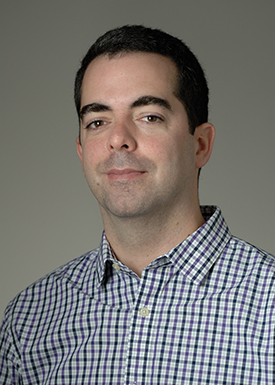
EDUCATION: University of Lisbon, Portugal (Ph.D. in biology)
TRAINING: Postdoctoral researcher, Program in Epithelial Biology, Stanford University School of Medicine (Stanford, California)
CAME TO NIH: In 2016 as a Stadtman Investigator
WEBSITE: https://irp.nih.gov/pi/pedro-batista
Research focus: My research focuses on understanding in what way RNA post-transcriptional modifications, also known as the epitranscriptome, regulate gene expression during development and disease. My group is investigating how the epitranscriptome is disrupted by metabolic rewiring, a process shared by multiple cancer cells. To dissect how metabolism and RNA-centric regulation of gene expression interact we are combining cell biology, CRISPR-based gene editing, high-throughput sequencing approaches, and computational analysis.
What significant discoveries have you made? As a postdoc, I found that the RNA modification N6-methyladenosine confers flexibility to the transcriptome and modulates the balance between pluripotency and differentiation (Cell Stem Cell 15:707–719, 2014; DOI:10.1016/j.stem.2014.09.019).
How did you get interested in science and your field? For as long as I can remember, I had a natural curiosity to find out how things worked. Biology became my favorite subject in high school, and genetics in college. After graduating college, I wanted to pursue a doctorate degree and got the opportunity to join a lab studying RNA interference. This is when I got interested in the noncoding information carried in our genomes. During my postdoc training, I wanted to understand [whether] RNA modifications could regulate noncoding RNAs the same way that chemical modifications regulate protein function. This work led to uncovering a role for a specific type of RNA methylation in stem-cell biology.
What do you find exciting about your work? All the new questions that emerge every time we take a step forward on understanding how cells regulate gene expression.
What do you like to do outside of work? I enjoy outdoor activities; exploring Washington, D.C.; and cooking with family and friends.
If I had more time I would … study other science fields like physics and math. I would also learn more about philosophy and history.
What about you would surprise most people? That I have been practicing martial arts since high school.
Would you like to tell us anything else? NIH is a great place!
ISABEL BEERMAN, PH.D., NIA
Earl Stadtman Investigator, Translational Gerontology, Epigenetics and Stem Cell Aging Unit, National Institute on Aging
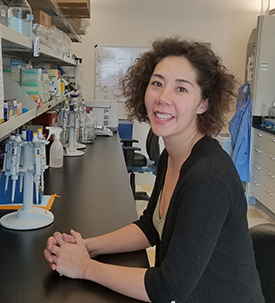
EDUCATION: Yale University, New Haven, Connecticut (M.Phil. and Ph.D. in genetics)
TRAINING: Postdoctoral fellow, Stem Cell Biology, Harvard Medical School (Boston); research fellow and research associate, Program of Cellular and Molecular Medicine, Boston Children’s Hospital (Boston)
BEFORE COMING TO NIH: Instructor in pediatrics, Harvard Medical School
CAME TO NIH: In 2016 as a Stadtman Investigator
WEBSITE: https://irp.nih.gov/pi/isabel-beerman
Research focus: My group is trying to understand the mechanisms that underlie age-associated functional decline, with a focus on adult tissue-specific stem cells. By establishing the mechanisms leading to dysregulation of stem cells, we can begin to target these alterations to restore potential to the aging stem-cell compartments. Because tissue-specific stem cells are responsible for maintaining overall tissue homeostasis, reestablishing the full potential to these aged cells could mitigate many age-associated phenotypes.
Have you made any significant discoveries? Our work has contributed to understanding how aging affects the hematopoietic stem cells (HSCs). During my postdoctoral training with Derrick Rossi, one of our first studies contributed to defining the heterogeneity of the HSC compartment. We, together with others in the field, demonstrated subsets of HSCs have differential lineage potential, with our unique contribution [being to define] how to prospectively isolate these inherently lineage-biased cells. We also demonstrated [that] the accumulation of myeloid-biased subsets of HSCs contributes to the myeloid-skewed lineage contribution in aged mice (Proc Natl Acad of Sci USA 107:5465–5470, 2010; DOI:10.1073/pnas.1000834107).
We continued to explore mechanisms underlying age-associated functional changes in HSCs and demonstrated an accumulation of DNA strand breaks in the aged HSC compartment. In a collaborative study with Irving Weissman’s lab at Stanford (Stanford, California), we demonstrated that DNA damage accumulation was tied to the quiescent nature of HSCs. When they are dormant, DNA damage response and repair pathways are attenuated in HSCs, allowing for damage to accumulate; however, these pathways are significantly upregulated when HSCs are driven into cycle, and damage can be repaired regardless of age (Cell Stem Cell 15:37–50, 2014; DOI:10.1016/j.stem.2014.04.016).
We also established there are unique DNA methylation landscapes of aged HSCs compared with young HSCs, which we can largely recapitulate by enforcing cell proliferation of young HSCs. Thus, we propose that HSCs may track cell divisions by epigenetic marks, which may ultimately limit their contribution to hematopoiesis (Mol Cell 47:633–647, 2012; DOI:10.1016/j.molcel.2012.06.019 and Cell Stem Cell 12:413–425, 2013; DOI:10.1016/j.stem.2013.01.017). These findings suggest a potential for restoring restricted potential of aged HSCs by resetting these nonpermanent modifications on the DNA, which is one of the key focuses of our current research.
How did you get interested in science and your field? I had the opportunity to learn about laboratory research during my sophomore year of high school through an internship program at the McLaughlin Research Institute for Biomedical Sciences (Great Falls, Montana). I was fortunate to have a mentor, George Carlson, who encouraged my interest, and I continued working in his group studying prions until I entered college. Though I wasn’t convinced I would pursue a career in research, I was accepted into Daniel Hartl’s group during my freshman year at Harvard and continued to gain experience in the lab. This early support and exposure to research science steered my decision to attend graduate school. The passion and perseverance of researchers inspire me, and I hope to share my own passion with my trainees.
What do you find exciting about your work? We hope to define methods to harness the potential of adult tissue-specific stem cells to mitigate some of the negative features that arise in our blood during aging. HSCs have the ability to give rise to all the specialized cells that make up our blood. During aging there is a decrease in the function of these cells, and we work to characterize the driving factors of this loss and are focused finding methods to reset the aged stem cells back to a more fully potent state. We believe that restoring the function to these cells will have a cascading, positive effect on the entire aged-blood system.
If I had more time I would … love to spend more time exploring museums, visiting my family, and improving my golf and squash games.
What about you would surprise most people? Unfortunately, anyone who has heard my off-key humming would be surprised that I was trained to sing classical music and played the organ for my hometown church when I was younger. I do, however, still proudly maintain my skill at driving a combine, which I learned growing up on a farm.
Would you like to tell us anything else? I am grateful and honored to be a member of the NIH intramural-research program. The outstanding science being performed, combined with ease of collaborations within my home institute (NIA) and throughout the NIH, provides an unparalleled opportunity to develop my program as well as to explore new avenues of research.
JOHN BROGNARD, PH.D., NCI-CCR
Earl Stadtman Investigator, Laboratory of Cell and Developmental Signaling, Center for Cancer Research, National Cancer Institute
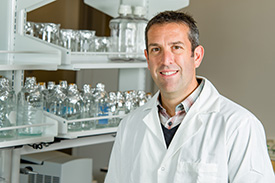
EDUCATION: Johns Hopkins University, Baltimore (M.Sc. in biotechnology); University of California, San Diego (Ph.D. in biomedical sciences)
TRAINING: Postdoctoral fellow, Salk Institute for Biological Studies (San Diego)
BEFORE COMING TO NIH: Group leader, Cancer Research UK Manchester Institute, University of Manchester (Didsbury, England)
CAME TO NIH: First as a research technician (1997–1999) and later a research associate in NCI (1999–2002); returned in 2016 as a Stadtman Investigator
WEBSITE: https://irp.nih.gov/pi/john-brognard
Research focus: The major focus of my lab is to elucidate cancer-associated kinases in the unexplored human kinome. Of the 538 kinases in the human kinome, approximately 300 have not been explored, but we know they are implicated in cancer and harbor putative driver mutations. We hope to identify novel druggable drivers so that cancer patients can benefit from precision-medicine-based targeted therapies. Collectively, our research should identify new genetic drivers, targets for therapeutic intervention, and novel mechanisms of tumorigenesis.
Have you made any significant discoveries? During my time at the NCI as a research associate in Phil Dennis’s lab (NCI) we defined protein kinase B (AKT) as a critical mediator of survival in lung cancer and determined that combining AKT inhibitors with chemotherapy could be beneficial for lung-cancer patients. The original paper has been cited over 900 times, and it was my first foray into precision-medicine-based approaches for cancer treatment (Cancer Res 61:3986–3987, 2001). During graduate school, I discovered a novel and important phosphatase, PHLPP (pleckstrin homology domain leucine-rich repeat protein phosphatase), that regulates several important intracellular signaling pathways (Mol Cell 25:917–931,2007). When I was at the University of Manchester, I worked with colleagues at UC San Diego to define the protein kinase C (PKC) family of enzymes as tumor suppressors, overturning the established dogma that PKCs were oncogenes (Cell 160:489–502, 2015; DOI:10.1016/j.cell.2015.01.001). We now focus on defining novel therapeutic targets in cancers of unmet need, and I feel my most important discoveries lie ahead.
How did you get interested in science and your field? I was exposed to research when I did internships at NCI after my senior year in high school and in the summers when I was home from college (James Madison University in Harrisonburg, Virginia). Specifically, I worked with Gary Pauly in NCI’s Laboratory of Comparative Carcinogenesis (he’s now in NCI’s Chemical Biology Lab, and I still interact with him). Those NCI internships got me hooked on the thrill of discovery and coming up with creative ideas.
What do you find exciting about your work? Every day we can make some pretty exciting discoveries that often have translational relevance.
What do you like to do outside of work? I mainly spend time with my sons playing soccer or tennis, hiking, fishing, or skiing. We try to enjoy the outdoors as much as possible.
If I had more time I would … travel and, in the winter, ski.
What about you would surprise most people? I grew up in a rural area—Middletown, Maryland. My dad took me fishing; hunting for rabbits and deer in Maryland; and even hunting for black bears in Canada. However, after living in the United Kingdom for six years and observing the effectiveness of making gun ownership illegal, I am now a huge advocate for extremely strict gun laws.
CHENGKAI DAI, PH.D., NCI-CCR
Earl Stadtman Investigator, Center for Cancer Research, National Cancer Institute
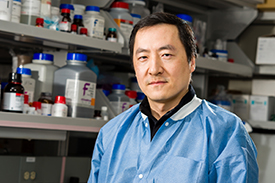
EDUCATION: Tianjin Medical University, Tianjin, People’s Republic of China (B.M.; M.S. in pathophysiology); University of Texas at Houston Health Science Center, Houston (Ph.D. in genes and development)
TRAINING: Residency in clinical medicine, Tianjin Second Central Hospital, Tianjin Medical University; postdoctoral fellowship in cancer biology, Whitehead Institute for Biomedical Research (Cambridge, Massachusetts)
BEFORE COMING TO NIH: Assistant professor, Department of Medicine, Tufts University School of Medicine (Boston); associate professor, Jackson Laboratory (Bar Harbor, Maine); and adjunct assistant professor, Graduate Faculty, University of Maine (Orono, Maine)
CAME TO NIH: In 2016
WEBSITE: https://irp.nih.gov/pi/chengkai-dai
Research focus: My group is using multidisciplinary approaches to explore the molecular mechanisms that enable the heat-shock response (proteotoxic stress response) to play a role oncogenesis. We are interrogating the role of proteomic stability in tumorigenesis and exploiting proteomic instability as an intrinsic vulnerability of cancer for therapy.
What significant discoveries have you made? Our group is among the first to discover the unexpected pro-oncogenic role of the proteotoxic stress response and demonstrate that cancer cells are addicted to, or dependent on, this stress response for their growth and survival. (Proteotoxicity refers to an impairment of cell function caused by the damage to or misfolding of a protein.) Importantly, our studies reveal that this stress-response pathway is critical to preserving proteomic stability and averting the emergence of tumor-suppressive amyloids in cancer cells, thereby enabling malignancy (Cell 130:1005–1018, 2007; DOI:10.1016/j.cell.2007.07.020 and Cell 160:729–744, 2015; DOI:10.1016/j.cell.2015.01.028).
How did you get interested in science and your field? I did not have a clear idea about what I wanted to do until medical school, when I decided I wanted to follow in my mother’s footsteps and become an internal medicine doctor. During medical school, however, I gradually realized that I was more interested in research and understanding the mechanisms underlying human diseases.
What do you find exciting about your work? Unraveling how biological systems work always excites me. In my work, the most exciting part is to explore the unknowns.
What do you like to do in your spare time? I like to travel to different places and experience different cultures.
If I had more time I would … travel around the world and try new things.
BRIAN GLANCY, PH.D., NHLBI and NIAMS
Earl Stadtman Investigator, Muscle Energetics Laboratory, National Heart, Lung, and Blood Institute, and in the National Institute of Arthritis and Musculoskeletal and Skin Diseases
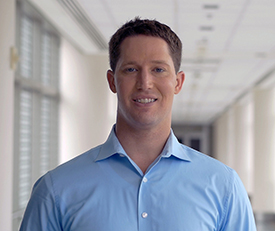
EDUCATION: Arizona State University, Tempe, Arizona (M.S. in kinesiology; Ph.D. in exercise science)
TRAINING: Postdoctoral fellow, Laboratory of Cardiac Energetics, NHLBI
CAME TO NIH: In 2009 for training
WEBSITE: https://irp.nih.gov/pi/brian-glancy
Research Focus: My lab is trying to determine how mitochondria are optimized within muscle cells to help maintain energy homeostasis during the large change in energy demand caused by muscle contractions. We are also developing and using novel, direct measurements of in vivo mitochondrial function in skeletal muscle under different workloads. I hope to unravel the signaling cascade involved in the upregulation of mitochondrial energy conversion during muscle contraction.
Have you made any significant discoveries? Recently, we demonstrated that skeletal-muscle mitochondria form a highly connected network resembling that of an electrical power grid and are capable of electrical conduction of the mitochondrial membrane potential throughout the cell. The discovery of this rapid energy distribution mechanism overturned longstanding ideas about diffusion as the primary energy-distribution pathway in skeletal muscle. Current work in this area focuses on providing a better understanding of the regulation and development of these mitochondrial networks as well as of their role in overall muscle function (Nature 523:617–620, 2015).
How did you get interested in science and your field? My career choices have largely been driven by my lifelong love of exercise and competition. As an undergraduate, I became very interested in skeletal-muscle metabolism through my course work. Around the same time, my job involved evaluating and assessing local social programs (including programs aimed at juvenile recidivism, neighborhood outreach, tutoring and mentoring, and welfare-to-work), and I really enjoyed the research aspect of it. I decided to merge the two things and pursue a career in investigating how our muscles respond to large energy demand caused by the onset of muscle contraction.
What do you find exciting about your work? I really enjoy finding new ways to look at things. In my field, doing so often involves developing new methods to evaluate research questions we could not answer previously.
What do you like to do outside of work? I’ve always liked to run around and play variety of sports. I also enjoy cooking and eating with my wife.
If I had more time I would … do a little bit more of everything. Balance is key.
RAMIRO IGLESIAS-BARTOLOME, PH.D., NCI-CCR
Earl Stadtman Investigator, Laboratory of Cell and Molecular Biology, Center for Cancer Research, National Cancer Institute
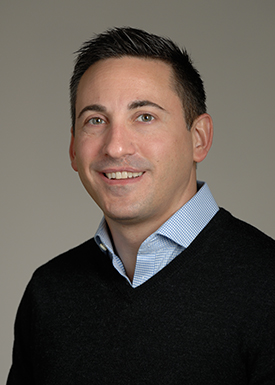
Education: National University of Cordoba, Cordoba, Argentina (Ph.D. in biochemical sciences)
Training: Postdoctoral fellow and research fellow, Oral and Pharyngeal Cancer Branch, National Institute of Dental and Craniofacial Research (2009-2015); research fellow, Developmental Skin Biology Section, National Institute of Arthritis and Musculoskeletal and Skin Diseases (2015-2016)
Came to NIH: In 2009 for training; became a Stadtman Investigator in 2016
Website: https://irp.nih.gov/pi/ramiro-iglesias-bartolome
Research Focus: Our lab focuses on elucidating the signaling mechanisms that control and drive tissue-specific stem-cell self-renewal and differentiation and their connections to tumor initiation and growth. By understanding the processes that drive cell proliferation and differentiation in adult tissues and during malignant transformation, we can identify signaling pathways that can be potentially targeted to modulate cell fate. Our goal is to identify particular G-protein-coupled receptors (GPCRs) and their linked signaling partners. GRCRs are master regulators of epithelial stem cells during skin development, tissue homeostasis, and malignant transformation such as in basal- and squamous-cell carcinoma.
What significant discoveries have you made? By using the skin epidermis as a model (in mice and in vitro systems), I demonstrated a novel tumor-suppressor activity of the heterotrimeric G protein G-alpha-s (Gnas) and its signaling partner protein kinase A (PKA) in the skin. GPCRs are the largest family of cell-surface molecules in signal transduction and play central roles in many physiological processes and pathological conditions. We showed that in mice, the deletion of Gnas and PKA in the skin induces basal-cell carcinoma, the most common form of cancer in humans. (Nat Cell Biol 17:793–803, 2015).
In other research, my colleagues and I also tried to determine why wounds in the mouth heal faster and with less scarring than wounds on the skin. To understand the differences in healing, we performed transcriptional analysis on sequential, paired oral and skin biopsies from healthy human subjects. We found that certain transcription factors were consistently upregulated in the oral wounds but not in skin wounds. Overexpressing some of these transcription factors in a mouse model of skin wounding enhanced healing. The findings suggest that the molecular signature of the oral mucosa could be used to develop therapies for wound healing (Sci Transl Med 10:eaap8798, 2018; DOI: 10.1126/scitranslmed.aap8798).
How did you get interested in science and your field? Since I was very young, I have wanted to understand how things worked, so I fell in love with my biology lessons from day one. They helped me to comprehend the world around me. When I found out that I could do scientific research for a living, I was immediately drawn to it. When I started my postdoctoral studies, one of my first projects was trying to understand the differential effect of a drug called rapamycin on normal and cancer cells. Although this drug kills cancer cells, it is beneficial for normal cells, particularly for adult or somatic stem cells (the cells that help with tissue maintenance and regeneration in the adult body). I found it fascinating how signaling pathways get rewired in cells during malignant transformation and how identifying pathways that work differentially in normal versus transformed cells can be used to develop novel therapies.
What do you find exciting about your work? Its constant dynamic nature. Every day we face new problems to solve and questions to answer. I also enjoy continuously learning about new subjects and new techniques, which we must do daily to be at the top of our field.
What do you like to do in your free time? My husband and I try to do a triathlon every year, so I enjoy swimming, biking, and running. We like spending time outdoors together, biking or running along the C&O canal or hiking. We are also part of a masters swimming club that helps us with swimming long distances and staying healthy. Not only are these activities a great way to reduce stress, but I’ve also come up with some of my best scientific ideas while doing laps in the pool!
If I had more time I would … spend it traveling. I enjoy traveling, but the hectic lab life does not allow much time for extended trips.
CHANDRA L. JACKSON, PH.D., NIEHS AND NIMHD
Earl Stadtman Investigator, Epidemiology Branch, National Institute of Environmental Health Sciences; National Institute of Minority Health and Health Disparities
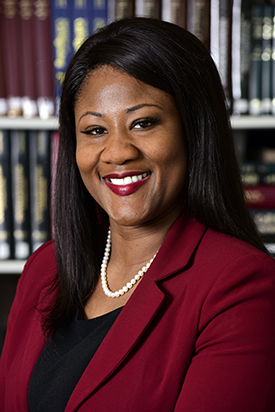
EDUCATION: Bethune-Cookman University, Daytona Beach, Fla. (B.Sc. in biology, 2003); Harvard T.H. Chan School of Public Health, Boston (M.S. in cardiovascular epidemiology, 2007); The Johns Hopkins University, Baltimore (Ph.D. in cardiovascular epidemiology, 2012)
TRAINING: Alonzo Smythe Yerby postdoctoral research fellow, Harvard T.H. Chan School of Public Health (2012–2014)
BEFORE COMING TO NIH: Research associate, Harvard Catalyst Population Health Research Program, Clinical and Translational Science Center, Harvard Medical School (Boston)
CAME TO NIH: In 2017
WEBSITE: https://irp.nih.gov/pi/chandra-jackson
Research focus: Using observational epidemiology studies and mixed-methods approaches, I investigate pathways by which factors in physical and social environments contribute to racial, ethnic, and socioeconomic disparities, primarily in sleep health—as an essential human need—and the subsequent risk of cardiometabolic conditions. My mission is to provide scientific evidence that informs policies and practices designed to improve overall population health while addressing preventable and costly health disparities.
Have you had any significant findings? My epidemiologic research to date has revealed novel areas for further inquiry and the need to identify social and environmental determinants of complex racial, ethnic, and socioeconomic disparities in sleep health. For instance, we have found, in nationally representative studies, that racial and ethnic disparities in sleep health are socially patterned: The most disadvantaged, low-opportunity groups were the most likely to be short sleepers (Am J Epidemiol 178:1442–1451, 2013; DOI:10.1093/aje/kwt159). The group has also found that place (or environmental settings) may matter more than race, because some sleep-health characteristics did not differ by race when people lived in similar environmental and social conditions. This finding suggests that environmental factors play a major role in health disparities and should be considered when designing interventions (Sleep Health 4:420–428, 2018; DOI:10.1016/j.sleh.2018.07.010)
How did you get interested in science and your field? I became interested in epidemiology after shadowing an emergency room physician who treated patients with serious acute as well as chronic illnesses. I immediately recognized that most patients would not need emergency treatment if the root social determinants (such as poverty and lack of preventive health-care services) and environmental determinants (such as substandard housing) of their health problems were addressed. I naturally gravitated toward public health—with epidemiology being a core discipline—and its focus on health promotion as well as disease prevention.
What do you find exciting about your work? That my research can provide scientific evidence to inform various types of interventions (including policies) designed to improve population health while addressing preventable health disparities. Ultimately, this work has the potential to be translated into action.
What do you enjoy doing outside of work? Expressing my creative side through, for instance, creating paintings, sculptures, and wood carvings.
If I had more time I would … engage in more domestic and international travel because I find the cultural differences across the globe immensely interesting and educational. I would also engage in community-based participatory research in hopes of partnering with community members, other researchers, and decision-makers to more effectively improve health in low-opportunity communities.
What about you would surprise most people? I am a first-generation college graduate.
KATHERINE MCJUNKIN, PH.D., NIDDK
Earl Stadtman Investigator, Laboratory of Cellular and Developmental Biology, National Institute of Diabetes and Digestive and Kidney Diseases
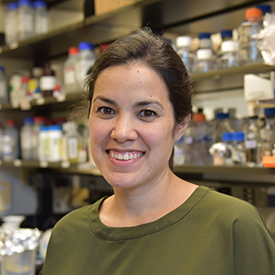
EDUCATION: Watson School of Biological Sciences, Cold Spring Harbor Laboratory, Cold Spring Harbor, N.Y. (Ph.D. in biological sciences)
TRAINING: Postdoctoral fellow, University of Massachusetts Medical School (Worcester, Massachusetts), with Victor Ambros
CAME TO NIH: In 2017
WEBSITE: https://www.irp.nih.gov/pi/katherine-mcjunkin
Research focus: My research group aims to define the poorly understood biological functions of microRNAs (miRNAs) in the embryo and the mechanisms of miRNA turnover. MicroRNAs play an essential role in most physiological processes in animals and plants including development, differentiation, and behavior. In our work, we are combining classical Caenorhabditis elegans–forward genetics with CRISPR-Cas-9-mediated genome editing, next-generation sequencing, cell biology, and biochemical techniques. Because embryonically expressed miRNAs exhibit a sharp decrease in abundance at the end of embryogenesis, our efforts to simultaneously study the biology of these miRNAs and the mechanism of miRNA decay has the potential to uncover regulatory modules that couple miRNA decay to developmental timing.
Have you made any significant discoveries? I discovered that embryonically-expressed microRNAs may act as developmental timers, keeping certain genes from turning on too early during development (Genes Dev 31:422–437, 2017; DOI:10.1101/gad.290155.116).
How did you get interested in science and your field? I’ve loved science from a young age. I think I could have ended up in many different fields, but I really like the culture of my field, which is both very rigorous and highly collaborative.
What do you find exciting about your work? Making new scientific discoveries is the best, but since eureka moments happen only rarely, I also enjoy mentoring trainees and seeing their progress in gaining skills and confidence.
What do you like to do outside of work? My favorite thing is to go see ballet companies from around the world when they come to dance at the Kennedy Center in Washington, D.C.
If I had more time I would … travel to see far-away friends.
What about you would surprise most people? I’m from West Virginia, which is very exotic to people in the Northeast, but less unusual around these parts.
JAGAN MUPPIDI, M.D., PH.D., NCI-CCR
Earl Stadtman Investigator, Lymphoid Malignancies Branch, Center for Cancer Research, National Cancer Institute
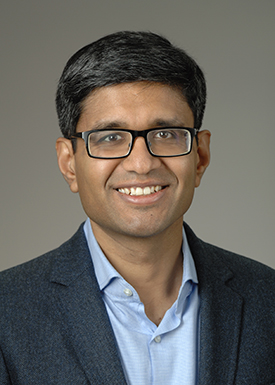
EDUCATION: University of Kansas School of Medicine, Kansas City, Kansas (M.D. and Ph.D.)
TRAINING: Graduate research in the Howard Hughes Medical Institute–NIH Research Scholars Program in the National Institute of Arthritis and Musculoskeletal and Skin Diseases (NIAMS); residency in internal medicine, New York–Presbyterian Hospital–Weil Cornell Medical Center (New York); fellowship in medical oncology, University of California, San Francisco (San Francisco)
BEFORE COMING TO NIH: Assistant adjunct professor, Department of Medicine, University of California, San Francisco
CAME TO NIH: In 2001 for training in the HHMI-NIH Research Scholars Program (2001—2004); returned in 2016 as a Stadtman Investigator
WEBSITE: https://ccr.cancer.gov/Lymphoid-Malignancies-Branch/jagan-r-muppidi
Research Focus: I am interested in understanding the intersection of the immune response and generation of lymphomas derived from B cells. The goal of my research is to define how genetic changes in B-cell lymphomas contribute to altered B-cell behavior within the microenvironment and subsequently become malignant. I am trying to define the microenvironmental factors within lymphoid tissue that promote the development of malignancy and also the mechanisms by which lymphomas exit the site where they develop and seed distant sites. I hope that my work—of defining the signals that are important for the confinement and growth regulation of B cells that are lost—may lead to the discovery of new therapeutic targets for B-cell lymphomas.
What significant discoveries have you made? During my postdoctoral fellowship, I defined a novel tumor suppressive pathway involving signals mediated by the small G-protein G-alpha-13. Signaling through this pathway is frequently lost in a common subtype of lymphoma that is derived from germinal-center B cells. My group found that this pathway has dual functions: It inhibits the survival of germinal-center B cells, it and inhibits cell migration and therefore confines germinal-center B cells to a particular location in lymphoid tissue. We proposed that the loss of this pathway in certain kinds of lymphoma might be able to promote the spread of cancer cells to distant sites (Nature 516:254–258, 2014; DOI:10.1038/nature13765).
How did you get interested in science and your field? I had limited exposure to basic-science research as an undergraduate and during my first two years of medical school. My first real exposure to science came when I interrupted my medical school training to spend three years as an HHMI-NIH Research Scholar (in Richard Siegel’s lab in NIAMS). During that program I was able, for the first time, to get hands-on experience in the laboratory with my own project. That experience made me realize that I wanted to become a scientist.
What do you find exciting about your work? I like being able to understand how normal mechanisms of B-cell homeostasis are perturbed in lymphoma, and I also like trying to understand what those perturbations can teach us about the biology of B-cell responses and the pathogenesis of lymphoma.
What do you like to do when you are not at work? I really enjoy cooking. I find it to be one of the more relaxing parts of my day.
If I had more time I would … sleep. We have two small children and sleep is at a premium in our household.
CARLO PIERPAOLI, M.D., PH.D., NIBIB
Earl Stadtman Investigator and Chief, Quantitative Medical Imaging Section, National Institute of Biomedical Imaging and Bioengineering (NIBIB)
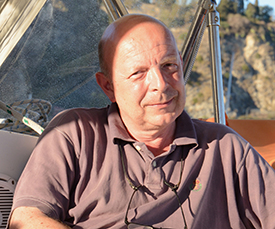
EDUCATION: University of Milan, Milan (M.D. and Ph.D. in neuroscience)
TRAINING: Visiting fellow (1991–1995) and visiting associate (1995–1997), Neuroimaging Branch, National Institute of Neurological Disorders and Stroke (NINDS)
CAME TO NIH: In 1991 for training; became a visiting scientist and chief of NINDS’s Diffusion MRI Unit (1997–1999); became a staff scientist at the National Institute of Child Health and Human Development (1999–2016); in 2016 became a Stadtman Investigator in NIBIB
WEBSITE: https://www.nibib.nih.gov/about-nibib/staff/carlo-pierpaoli-0
Research focus: My research group is developing noninvasive biomarkers that can characterize brain anatomy and physiology across the lifespan. We are providing diagnostic and research tools that can use data acquired with imaging techniques, such as magnetic resonance imaging (MRI), to assess neurological disorders. We aim to translate some of our research findings into effective clinical tools. We hope to contribute to designing a new role for radiology and imaging sciences in achieving noninvasive phenotyping with quantitative metrics that are ideally suited for inclusion in large integrated databases. We developed TORTOISE, a comprehensive diffusion MRI software package, and have made it publicly available to the scientific and clinical communities for quantitative image analyses.
Have you made any significant discoveries? My lab and I pioneered MRI modalities, such as diffusion tensor imaging (DTI), that are now widely used in the neuroscience research community. We performed the first DTI study of the human brain. In subsequent years, we worked consistently on making DTI metrics more biologically specific, reliable, and accurate. We proposed biomarkers that are informative of white-matter structure and organization, reversible brain ischemia, stroke, postnatal cortical maturation, and a type of nerve degeneration called Wallerian degeneration (Neuroimage 13:1174–1185, 2001). More recently, we worked on validating diffusion MRI to study brain connectivity (PNAS 111:16574–16579, 2014; DOI:10.1073/pnas.1405672111).
How did you get interested in science and your field? I have been interested in science experiments since I was very young. I enjoy the scientific approach that includes deductive reasoning, formulating hypotheses, and testing hypotheses on the basis of experimental findings. I got involved in my specific research field (quantitative MRI) in a rather serendipitous way. Early in my research career, I was involved with a neuropharmacology project using positron emission tomography (PET) imaging. Unfortunately, that project reached a dead end. I looked around for interesting lines of research that I could pursue without leaving the laboratory that had offered me a research fellowship. The emerging field of diffusion MRI got my attention, but I did not have any experience with MRI. I went to the NIH library and I started reading a lot about the foundations of this technique. A year later I had my first peer-reviewed publication in this new field of diffusion MRI (Radiology 189:439–448, 1993). [https://www.ncbi.nlm.nih.gov/pubmed/8210373]
What do you find exciting about your work? The freedom of pursuing my scientific interests and interacting with postdocs.
What do you like to do outside of work? Activities that allow me to be immersed in natural settings: sailing, hiking, and skiing. I also enjoy attending the instrumental music lessons that my kids take and listening to them playing.
If I had more time I would … probably sail around the world.
What about you would surprise most people? My wife reminded me of this one: In high school I would bring with me parts of my motorcycle, such as the carburetor, that I would disassemble, under my desk, during the most boring lessons, to discover how they were made. Beside this, I really do not know. I am generally outspoken and transparent and therefore I am quite predictable.
Would you like to tell us anything else? I would not be who I am without my parents, my wife, my kids, and the NIH.
TIFFANY M. POWELL-WILEY, M.D., M.P.H., F.A.H.A., NHLBI AND NIMHD
Earl Stadtman Investigator, Cardiovascular Branch, Division of Intramural Research, National Heart, Lung, and Blood Institute; Adjunct Investigator, National Institute on Minority Health and Health Disparities
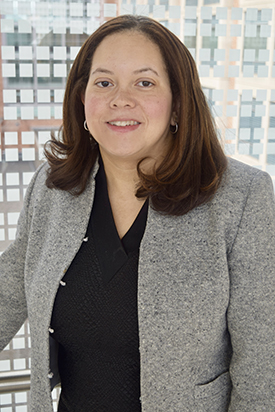
EDUCATION: Gillings School of Global Public Health at the University of North Carolina, Chapel Hill, North Carolina (M.P.H.); Duke University School of Medicine, Durham, North Carolina (M.D.)
TRAINING: Residency in internal medicine, Harvard’s Brigham and Women’s Hospital (Boston); fellowship in cardiology, University of Texas Southwestern Medical Center (Dallas)
CAME TO NIH: In 2011 as an assistant clinical investigator (NHLBI) and staff cardiologist (NIH Clinical Center); became Stadtman Investigator in 2017
WEBSITE: https://www.nhlbi.nih.gov/science/social-determinants-obesity-and-cardiovascular-risk
Research Focus: My research group is designing community-based interventions that address cardiovascular health disparities in resource-limited communities in Washington, D.C. Our three main goals are 1) delineating mechanisms by which the neighborhood environment influences the development of obesity, diabetes, and other markers of cardiometabolic risk; 2) identifying methods for incorporating mobile-health technology into interventions addressing behaviors associated with cardiometabolic health; and 3) identifying and characterizing physiologic pathways influenced by the chronic stress that comes from living in adverse neighborhood conditions.
Have you made any significant discoveries? We were one of the first research groups to show that moving to a more socioeconomically deprived neighborhood was associated with a higher risk of obesity over time (compared with staying in the same socioeconomic-level neighborhood or moving to a higher socioeconomic-level neighborhood). Thus, our work demonstrates that the environment in which someone lives cannot be ignored when considering treatment for obesity. The environment really must be considered along with individual factors that lead to obesity. One thing that was particularly surprising was how robust the effect of neighborhood socioeconomic level as a neighborhood factor appears to be on weight change and obesity (Am J Prev Med 49:72–79, 2015; DOI:10.1016/j.amepre.2015.01.013).
How did you get interested in science and your field? My parents and my science and mathematics teachers nurtured my natural curiosity to examine how the world works using the scientific method. They encouraged me to take part in classes and extracurricular activities to explore science and engineering. Once I decided I wanted to go to medical school, I saw myself building a career as a physician–scientist. I loved the idea of being able to take care of patients, but I wanted a good portion of my time to be spent looking for ways to improve care, not just for individuals, but for populations of patients. In medical school, after having the opportunity to care for patients with cardiovascular disease and seeing the breadth of research possible in cardiovascular medicine, I decided that I wanted to have a research career that focused on cardiovascular-disease prevention and health promotion.
What do you find exciting about your work? The variety of the work I do is most exciting. On any given day, I might be engaging community members in Washington, D.C., to discuss the design of a community-based intervention; working with technology developers on mobile applications for interventions; or analyzing data from one of our studies. The work never gets monotonous or boring.
What do you like to do outside of work? My passion is travel. I am always planning my family’s next vacation. I also like Zumba [exercise], yoga, swimming, and cooking.
If I had more time I would … travel the world for at least a year and make certain that I visited every continent and all of the places on my bucket list.
What about you would surprise most people? My first career choice was to be an airline pilot, but poor vision and my tendency to get motion sickness got in the way.
JOHNNY TAM, PH.D., NEI
Earl Stadtman Investigator, Clinical and Translational Imaging Unit, National Eye Institute
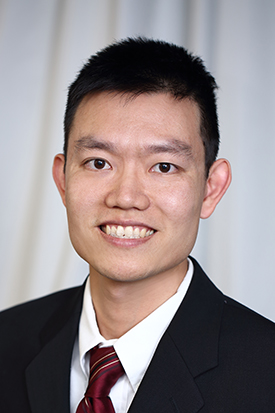
EDUCATION: University of California, San Francisco, and University of California, Berkeley (Ph.D. in bioengineering)
TRAINING: Whitaker International Postdoctoral Fellow, Institute of Photonic Sciences (Barcelona, Spain); research fellow, NEI
CAME TO NIH: In 2014 for training; became staff scientist in 2015 and Stadtman Investigator in 2017
WEBSITE: https://www.irp.nih.gov/pi/johnny-tam
Research Focus: My lab is using advanced optical-imaging techniques such as adaptive optics (a technology for measuring and correcting the optical imperfections in astronomy, microscopy, and vision science) to understand the onset and progression of retinal diseases at the cellular level. We can visualize healthy and diseased cells directly inside patients’ eyes to determine the sequence and timing of all the cumulative microscopic changes that give rise to eye diseases. Our system is a useful system for modeling the in vivo interactions of neurons, epithelial cells, and vasculature within the central nervous system in health, aging, and disease.
Have you made any significant discoveries? My lab has pioneered new ways to image cells and structures in the eye by combining technologies such as adaptive optics with other technologies such as autofluorescence of intrinsic molecules, fluorescence microscopy of cells, and angiography of blood vessels. Using this multimodal imaging approach, we have demonstrated new capabilities for directly visualizing retinal-pigment epithelial cells and choriocapillaris in the living human eye; our work has important clinical applications. In addition to these techniques, we have also developed sophisticated computer algorithms to quantify the rich datasets generated by multimodal adaptive optics.
How did you get interested in science and your field? I’ve been fascinated by the interplay between engineering and science for as long as I can remember. I began building and taking apart toys and devices and figuring out how they work from a very young age. Later on, I became interested in medical devices, surgical robotics, and prosthetics, which led me to pursue training as a bioengineer. Now, I design and build complex scientific instruments for medical imaging.
What do you find exciting about your work? To this day, I am still mesmerized by seeing images of cells in the living human eye. Observing life’s processes at this level of detail never gets old.
What do you like to do outside of work? I spend most of my spare time with family, especially with my young children.
If I had more time I would … spend more time at the bench.
What about you would surprise most people? Before coming to the NIH, I lived in Spain, where I became fluent in Spanish and learned to cook paella.
Would you like to tell us anything else? I believe it is critical for all scientists to serve as positive role models for the next generation of scientists, who will be such an important part of our future society.
FASIL TEKOLA-AYELE, M.P.H., PH.D., NICHD
Earl Stadtman Investigator, Epidemiology Branch, Division of Intramural Population Health Research, Eunice Kennedy Shriver National Institute of Child Health and Human Development
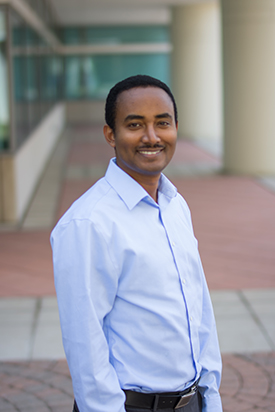
EDUCATION: School of Public Health, Addis Ababa University, Addis Ababa, Ethiopia (M.P.H.); Brighton and Sussex Medical School, Brighton, England (Ph.D. in genetic epidemiology)
TRAINING: Postdoctoral fellow, Center for Research on Genomics and Global Health, National Human Genome Research Institute (NHGRI)
BEFORE RETURNING TO NIH: Visiting scientist, Analytical Genomics of Complex Traits Group at the Wellcome Trust Sanger Institute (Cambridge, England)
CAME TO NIH: In 2010 for training at NHGRI; in 2016 became Stadtman Investigator in NICHD
WEBSITE: https://irp.nih.gov/pi/fasil-tekola-ayele
Research Focus: My research seeks to understand genetic influences and their interactions with past and present-day environmental factors in fetal growth variations/differences and consequent cardiometabolic diseases and health disparities. Abnormal fetal growth and low birthweight are associated with cardiometabolic diseases in later life, and they show significant regional, population, and individual differences. What underlies these differences in early growth and consequent cardiometabolic outcomes is not clearly understood. My research program uses genetic-epidemiology approaches to investigate genetic influences in early growth, cardiometabolic diseases, and health disparities.
Have you made any significant discoveries? During my Ph.D. work and postdoctoral fellowship, I helped identify a genetic variant in the [human leukocyte antigen] class II region of chromosome 6 that increases susceptibility to podoconiosis (a tropical lower-leg lymphedema—in genetically susceptible individuals—resulting from long-term barefoot exposure to unknown immune triggers in red-clay soil derived from volcanic rock). The study has shed the first insight into the potential role of T-cell-mediated immune response in the pathogenesis of podoconiosis (N Engl J Med 366:1200–1208, 2012; DOI:10.1056/NEJMoa1108448).
During my postdoctoral fellowship at NHGRI working on the African Genome Variation Project, my studies led to new insights into human genetic variations and effects of those variations in the genetic epidemiology of cardiometabolic diseases in populations of African ancestry. We were able to document the genetic-variation landscape of African populations and its implication for health and disease (Nature 517:327–332, 2015; DOI:10.1038/nature13997).
How did you get interested in science and your field? My parents were school teachers with a tremendous curiosity about science. When I was very young, my father would read aloud to me biographies of accomplished scientists. Those stories sparked my interest in becoming a physician and scientist. In high school, I developed an interest in physics and math. I joined a master’s degree program in public health, which opened my eyes to the potential of using biomedical research to improve societal health, and I met great mentors who played key roles in shaping my career. Perhaps, an important milestone that put me into genetics was fieldwork in rural Ethiopia, [which] gave me exposure to familial clustering of podoconiosis.
What do you find exciting about your work? Seeing how some research projects lead to discoveries!
What do you like to do in your free time? I like spending time with family and friends, running, and, more recently, gardening.
If I had more time I would … learn to play the guitar better.
Would you like to tell us anything else? I am grateful for the opportunity to work with an enthusiastic and diverse scientific community of the NIH intramural research program.
CHUAN WU, M.D., PH.D., NCI-CCR
Earl Stadtman Investigator, Experimental Immunology Branch, Center for Cancer Research, National Cancer Institute
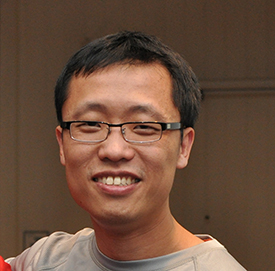
EDUCATION: University of Münster, Münster, Germany (Ph.D. in natural science); Shanghai Second Medical University, Shanghai, China (M.D. in clinical medicine)
TRAINING: Postdoctoral fellow, Institute for Physical Chemistry, University of Münster; postdoctoral fellow, Department of Neurology, Brigham and Women’s Hospital, Harvard Medical School (Boston)
BEFORE COMING TO NIH: Assistant professor, Department of Neurology, Brigham and Women’s Hospital, Harvard Medical School
CAME TO NIH: In 2017
WEBSITE: https://www.irp.nih.gov/pi/chuan-wu
Research Focus: My lab is studying the role of intestinal neuron-immune interactions in health and disease. In particular, we are interested in how intercellular interactions regulate intestinal immune homeostasis and inflammation. At the mucosal surface of the gastrointestinal tract, the immune system reacts to harmful pathogens while tolerating commensal microbiota. We are trying to gain a deeper understanding of how cell-cell interactions, particularly neuron-immune interactions on the mucosal surface, orchestrate immune responses that help cells cope with environmental insults.
What significant discoveries have you made? My previous works focused on the molecular regulation of T-cell differentiation during autoimmune disorders. One of my main accomplishments was to identify an inducible kinase called serum glucocorticoid kinase 1 (SGK1) as essential for the development of a pathogenic T-helper 17 cell (Th17) response. It was already known that SGK1 regulates the epithelial sodium channel (ENaC) and enhances sodium ion (Na+) uptake by cells. We discovered that SGK1 is also critical for mediating Na+-induced Th17-cell differentiation. We tested T-cell responses to high-sodium environments under various pathological conditions and, in so doing, shed light on how environmental factors regulate immune responses. In addition, our recent work—identifying key factors specific for regulatory T cells’ function on the mucosal surface—may lead to the development of therapeutic modulation of T-cell responses on mucosal sites in inflammatory bowel disease, asthma, and allergies.
How did you get interested in science and your field? My father is a microbiologist and had a big influence on me as I developed my interests in science. During my graduate study and postdoc training, I focused on T-cell function in autoimmune diseases, particularly inflammation within the central nervous system. I then become interested in studying how immune-neuron interactions modulate mucosal homeostasis in the peripheral nervous system.
What do you find exciting about your work? The explosion of new technology has led to new ways to integrate immunology with genetics, microbiology, neuroscience, physics, chemistry, and mathematics. We can use these new perspectives and new tools to understand some of the old concepts in immunology. More interdisciplinary studies will surely lead to novel applications and approaches for resolving questions in immunology.
What do you like to do outside of work? I love to do computational illustrations, paper-based sketches, and abstract paintings to depict my scientific work. I also paint landscapes and portraits. Painting is very satisfying and helps to relieve work-related stress.
If I had more time I would … spend more time with my friends and family.
What about you would surprise most people? I was not a good student and almost dropped out of medical school. None of my college classmates and teachers back then would have believed that I would become a scientist one day.
Would you like to tell us anything else?bA great piece of scientific work usually is a combination of an insightful idea and a wild imagination.
PING ZHANG, PH.D., NCI-CCR
Earl Stadtman Investigator, Structural Biophysics Laboratory, Center for Cancer Research, National Cancer Institute
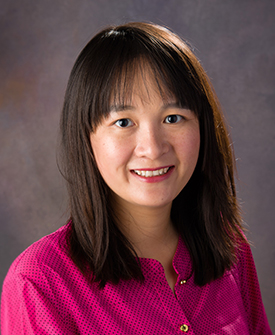
TRAINING: Postdoctoral research associate, Howard Hughes Medical Institute, University of California, San DiegoEDUCATION: Purdue University, West Lafayette, Indiana (Ph.D. in virology and structural biology)
BEFORE COMING TO NIH: Assistant project scientist, Department of Pharmacology, University of California, San Diego
CAME TO NIH: In 2016 as Stadtman Investigator
WEBSITE: https://irp.nih.gov/pi/ping-zhang
Research focus: My laboratory studies the structural and mechanistic basis of kinases that are closely related to human cancers. We apply a combination of biochemical and structural [single-particle cryoelectron microscopy (CryoEM) and X-ray crystallography] approaches to reveal the molecular mechanisms of such multicomponent biological complexes and help to provide new strategies for therapeutic targeting.
How did you get interested in science? Fundamental questions such as “why are we here,” “how do we fit into the universe,” and “what is life” have always intrigued me. Science can at least help us to turn the last question into specific projects that can lead to remarkable discoveries, tell us why things are the way they are, and how the natural world works—from atoms to galaxies.
Why did you choose to work in the field of kinases? My scientific endeavors have always been driven by a strong interest in molecular and cellular mechanisms underlying human diseases. Protein kinases are key regulators in complex cellular processes. Dysregulation of kinase-signaling processes is associated with many human diseases, particularly cancer. The protein kinase superfamily has become a major drug target in the past decades. I chose to work in this field as I would like to contribute to this exploration and help people. The field is very diverse and provides me countless opportunities that align with my career interests.
What do you find exciting about your work? Helping to understand how things work with the potential to make people’s lives better.
What do you like to do outside of work? Spending time with my kids, reading, and wondering.
If I had more time I would … do more reading and wondering.
This page was last updated on Tuesday, April 5, 2022
